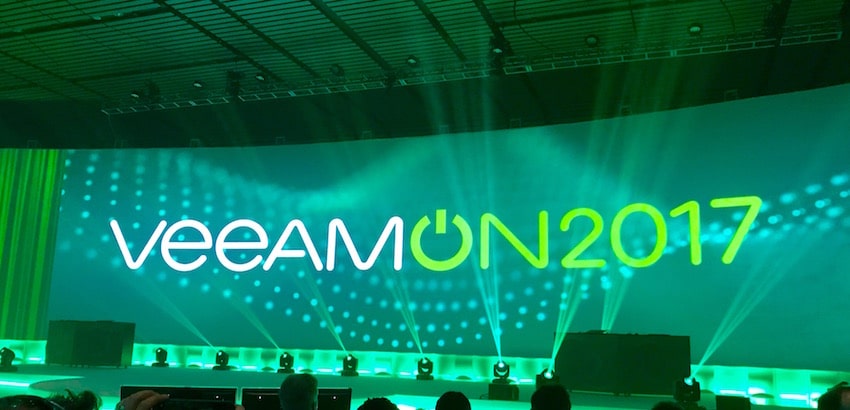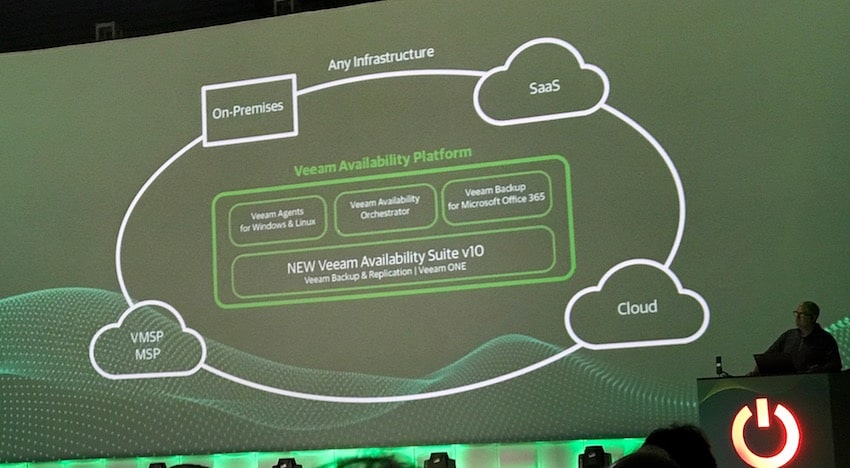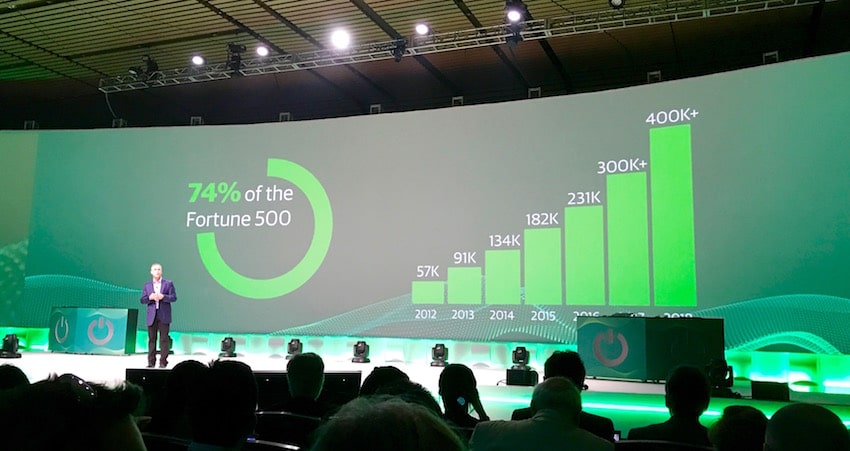Veeam Software is holding it annual event, VeeamOn 2017, in New Orleans, Louisiana. This year the company has invited StorageReview, as well as a few thousand others, down to have a look at some or its new innovations. These new innovations are designed to help enterprises thrive in multi-cloud and hybrid-cloud environments. Among the announcements is the all new Veeam Availability Suite v10, which allows businesses to bring their continuity and agility to new levels.
Veeam Software is holding it annual event, VeeamOn 2017, in New Orleans, Louisiana. This year the company has invited StorageReview, as well as a few thousand others, down to have a look at some or its new innovations. These new innovations are designed to help enterprises thrive in multi-cloud and hybrid-cloud environments. Among the announcements is the all new Veeam Availability Suite v10, which allows businesses to bring their continuity and agility to new levels.
As far as Veeam products go, we’ve previously reviewed Veeam Backup & Replication v8. We found the product to be easy to deploy, manage, and use as well as having easy integration and fast performance. Not only did we review it, we actively use it for backup in our lab. We are also working with Veeam on a review of the latest version of Backup & Replication, v9.5.
The latest version of Veeam’s flagship product, Veeam Availability Suite Version 10, provides enterprises with complete end-to-end availability and cross-cloud data management platform by supporting virtual, physical or cloud workloads on any infrastructure in multi-cloud and hybrid-cloud environments—whether it’s private, public, managed or SaaS. Also added to the newest version is Veeam Availability for Amazon Web Services (AWS), Veeam Agent for Microsoft Windows, and Extended Veeam ‘Always-On Cloud’ Availability Platform.
Veeam Availability Suite v10 is designed to manage and protect:
- Physical servers and NAS solutions
- Tier-1 applications and mission-critical workloads with Veeam CDP (continuous data protection), bringing recovery SLAs of seconds using continuous replication to the private or managed cloud;
- Native object storage support, freeing up costly primary backup storage with policy-driven automated data management to reduce long-term retention and compliance costs. This includes broad cloud object storage support with Amazon S3, Amazon Glacier, Microsoft Azure Blob and any S3/Swift compatible storage.
Veeam Availability for AWS is touted as the industry’s first cloud-native, agentless backup and availability solution built specifically to protect and recover AWS applications and data. As a result, enterprises will be able to more reliably move to (as well as manage) a multi-cloud or hybrid cloud environment, which reduces the possibility of losing access to applications all the while ensuring the protection of AWS data against accidental deletion, malicious activity, and unplanned outages.
Features of Veeam Availability for AWS include:
- Cloud-native, agentless backup and recovery using native AWS snapshots eliminating complexity and dramatically improving recovery SLAs
- Decouples data and stores backups independently from the underlying AWS infrastructure
- Powerful and reliable recovery technologies to achieve industry-leading RTOs including instant recovery, granular file and application recovery
Veeam Agent for Microsoft Windows extends Veeam “Always-On Cloud” Availability Platform to public cloud and physical servers, a feature that had been lacking. It features capabilities that promote Availability for Windows-based physical servers, workstations and endpoints, as well as Windows workloads running in public clouds (e.g., Microsoft Azure and AWS).
Partnerships are extremely important to Veeam and they have built a fairly strong ecosystem of partners over the last nine years. This ecosystem is further strengthened by the addition of IBM, Lenovo and INFINIDAT to the Universal Storage API framework. Adding these vendors gives users the ability to leverage “innovative and powerful 1 + 1 = 3 capabilities.” Veeam states that it will significantly improve ‘Always-On’ Cloud Availability and reduces costs without adversely impacting production.
Additionally, Veeam customers can leverage the platform to tackle modern business challenges via new integrations and partners such as including VMware vRealize, DataGravity and Starwind Software, indicating:
- Log data generated by storage, hypervisors and applications is large in scale and unstructured, and takes a long time to analyze for actionable insights, costing time and money. Veeam’s content pack for VMware vRealize Log Insight is a powerful analytics and monitoring tool for the Veeam Availability Suite environment designed to provide users improved visibility, actionable insights, and management of Veeam infrastructure, reducing IT management costs and mitigating the risk of downtime
- Data Gravity’s fully federated search and analytics capabilities enable organizations to meet corporate data governance and regulatory compliance requirements, while providing total data visibility, security and enhanced availability for IT, virtualization, and security professionals. Combined with Veeam, organizations can ensure the protection and security of their most sensitive business information while maintaining optimal service Availability
- StarWind Cloud VTL for AWS and Veeam offers cost-effective and scalable tape replacement with Amazon S3 and Glacier object storage, helping businesses to meet regulatory requirements for data retention with no changes to the established tape-centric data archival processes
Veeam is doing well as a company. While they aren’t attempting to cause major disruptions in the industry, they have found a niche to fill (that has grown to a major demand) and they do it well. With nearly a quarter of a million customers (12,000 added in the last quarter alone), Veeam has been able to record 33% year over year in total bookings. Considering they have over $600 million in annual bookings, this is quite impressive. It will be interesting to see where the companies goes next.
Sign up for the StorageReview newsletter



